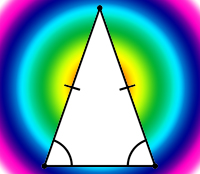Today’s ACT question of the day is asking: do you know the Pythagorean theorem, and can you simplify a radical expression?
If you do and can, this is a 20-second question. If you don’t, you should the Pythagorean theorem now: a^2 + b^2 = c^2. That is, the square of the length of each side (or “leg”) of a right triangle is equal to the square of the length of the hypotenuse. This theorem makes an appearance dozens of times in various ways throughout your test, so keep it with you.
Now that we’ve got that out of the way, let’s apply it! Continue reading







 Today’s ACT question of the day comes from the same social sciences passage about the medieval court system that we read a few days ago. (Sorry that the ACT doesn’t publish a permanent link to its questions of the day like the SAT does! I’m looking for an online link to their questions, but the general principles still apply to the questions that you will see on test day – and those principles are more important than solving specific questions, since you won’t see these exact questions on your test, anyhow!)
Today’s ACT question of the day comes from the same social sciences passage about the medieval court system that we read a few days ago. (Sorry that the ACT doesn’t publish a permanent link to its questions of the day like the SAT does! I’m looking for an online link to their questions, but the general principles still apply to the questions that you will see on test day – and those principles are more important than solving specific questions, since you won’t see these exact questions on your test, anyhow!)
